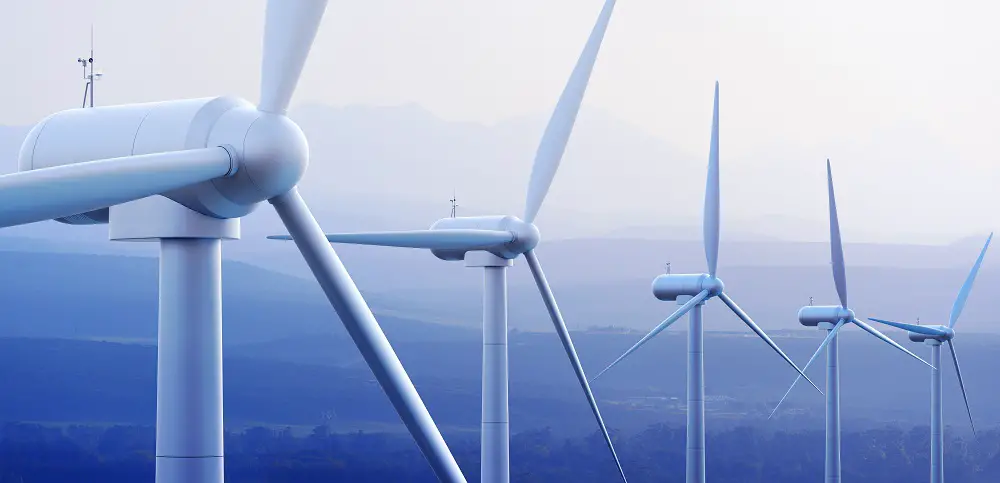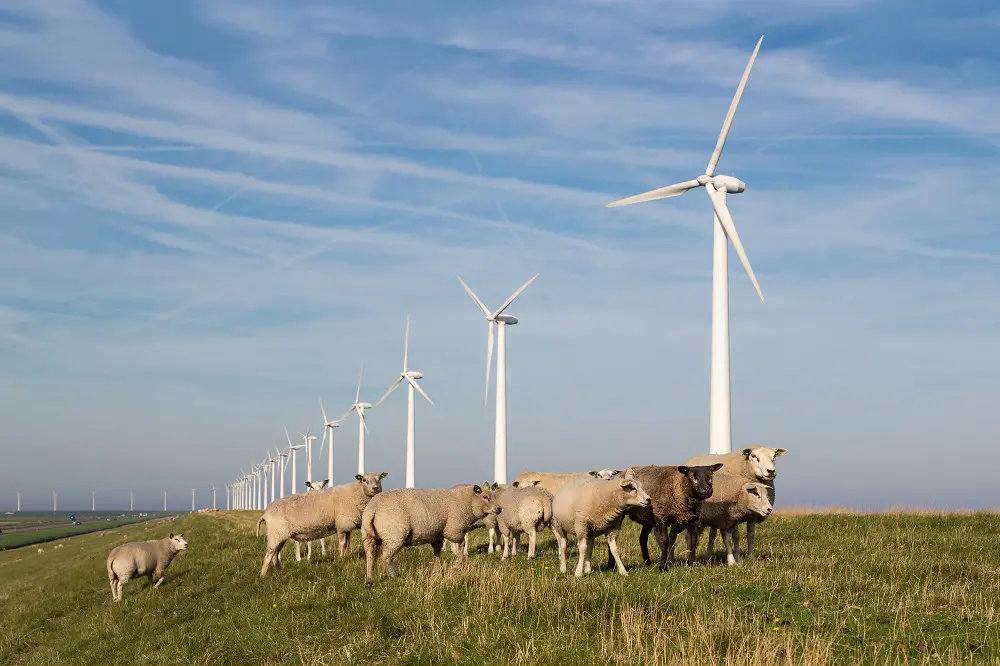To maximize electrical output, turbines should be spaced in such a way that they capture the most wind whilst remaining unhindered by obstructions, turbulence, or drag.
Wind farms are designed in such a way that one wind turbine doesn’t block the flow of air from the next, thus enabling each to capture the greatest amount of kinetic energy from the wind as possible.
Road networks need to be able to pass close to, if not between wind turbines. For this reason, some regulations should be adhered to.
The blades of a wind turbine should be at least 29.5 feet above any obstacle.
If you have ever seen a turbine mounted on tall, structural support, this is why. It probably needs to gain clearance height above farms, ranches, and the power station.
The blades of a wind turbine should be at least 492.1 feet away from the nearest obstacle.
This isn’t from the nearest turbine, they should be further spaced, for reasons that we will discuss below. Turbines should be installed this distance from other buildings and structures for safety reasons and to prevent wind flow obstruction.
Wind Turbine Spacing: Current Configurations

Optimum wind turbine spacing ensures the landowner maximizes their space.
It also helps to minimize any noise from the turbines. This will only work if they are correctly spaced and are subject to changing wind conditions.
The ideal distance between turbines varies, not only between countries, but states, cities, and even small towns.
Each wind farm responds to its defining factors, which include wind speed ratios and direction, size and type of the turbine, and land costs.
It has long been believed that distances between 6 and 10 times the diameter of the rotor are optimal, with most wind farmers and directors settling on 7 times the distance.
Therefore, if the rotor diameter of a wind turbine is 275 feet, multiplying that by 7 results in the distance apart the wind turbines should be.
275ft. x 7 = 1925ft.
This configuration has proved successful, when wind flow has been favorable, for very many years.
Modern-Day Analysis of Wind Turbine Spacing
When Charles Meneveau, a respected Professor of Mechanics, dug deeper into the efficiency of large wind farms, he found that many were underperforming, particularly those in the largest wind farms containing hundreds, if not thousands of turbines.
He felt that all initial site testing, and that of the turbines themselves, was done individually, and wasn’t subject to how they interacted with or were disrupted by a series of others.
He, and a team of Belgian experts, designed a new formula based on these, and multiple other factors, to find the optimal spacing between wind turbines.
Turbulence is sometimes thought of as the enemy of the wind turbine. Each revolution of the blades harnesses more kinetic energy if the rotation occurs smoothly and unhindered.
However, Meneveau and his team discovered that maximum energy generation happened not from the horizontal winds, but the strong winds and turbulence created by the tall turbines.
He found that when turbines were spaced further apart, the landscape altered to create more turbulence at higher altitudes.
This air is ‘whipped up’, creating stronger gusts for the blades to capture and pull downwards.
More enhanced kinetic energy increases electricity production levels.
Testing on these large capacity wind farms revealed that the ideal distance is now double that of previous beliefs. That is, the suggested recommended separation of each turbine being 15 times the rotor diameter away from its nearest neighbors.
Greater Spacing Brings Increased Costs
The issue with increased spacing is that you need twice the space around a wind turbine. Meaning, you are only going to fit half as many onto the land. Unless you purchase twice as much land than at first anticipated.
Projected profits and costs will summarize if the increased financial outlay balanced against the much-improved production efficiency of each wind turbine is viable.
Turbine manufacturers need sales, and in order to maximize sales they will always recommend minimum spacing (6-10 rotor diameters). Some governments pay subsidies to wind farmers if power production is exceeding demand. These payments are made per turbine, the more you own, the greater the payment.
The Benefits of Improved Wind Turbine Spacing
Close turbines that are in line with prevailing winds still allow the turbulent air leaving their blades to pass on significant amounts of turbulence when entering the next turbine.
This creates noise issues as it is too difficult to contain large amounts of sound.
The additional vibration created by the turbulence also shortens the life of many internal components. Bearings, brakes, and rotational parts all become more prone to breakage, catastrophic failure, and in some cases, fire.
Overall, turbines separated by less than 15 times their rotational diameter will have a shorter useful life than those spaced further apart.




